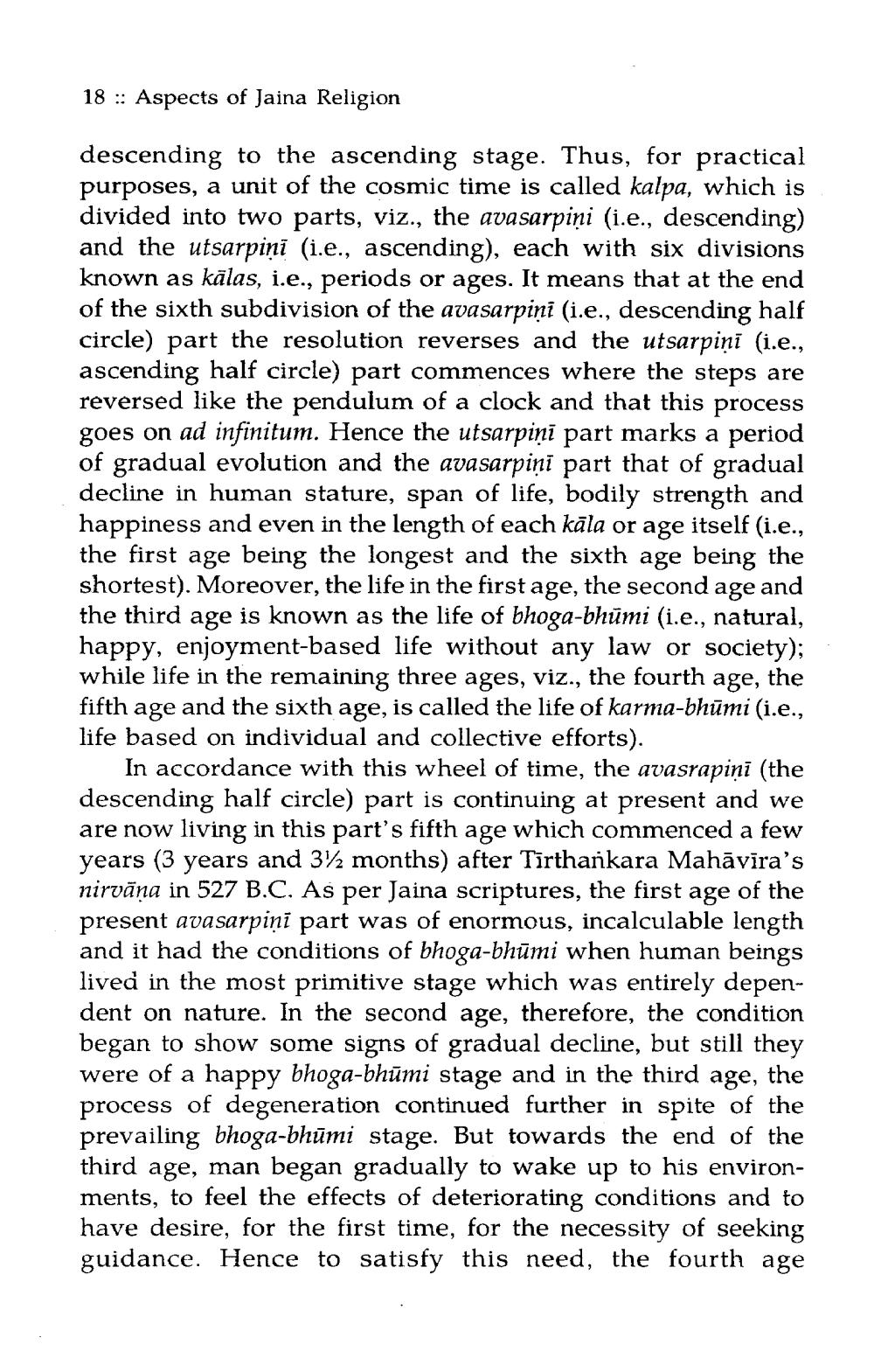________________
18 :: Aspects of Jaina Religion
descending to the ascending stage. Thus, for practical purposes, a unit of the cosmic time is called kalpa, which is divided into two parts, viz., the avasarpiņi (i.e., descending) and the utsarpiņi (i.e., ascending), each with six divisions known as kālas, i.e., periods or ages. It means that at the end of the sixth subdivision of the avasarpiņi (i.e., descending half circle) part the resolution reverses and the utsarpiņi (i.e., ascending half circle) part commences where the steps are reversed like the pendulum of a clock and that this process goes on ad infinitum. Hence the utsarpiņi part marks a period of gradual evolution and the avasarpini part that of gradual decline in human stature, span of life, bodily strength and happiness and even in the length of each kāla or age itself (i.e., the first age being the longest and the sixth age being the shortest). Moreover, the life in the first age, the second age and the third age is known as the life of bhoga-bhūmi (i.e., natural, happy, enjoyment-based life without any law or society); while life in the remaining three ages, viz., the fourth age, the fifth age and the sixth age, is called the life of karma-bhūmi (i.e., life based on individual and collective efforts).
In accordance with this wheel of time, the avasrapini (the descending half circle) part is continuing at present and we are now living in this part's fifth age which commenced a few yea s (3 years and 322 months) after Tirthankara Mahāvira's nirvāṇa in 527 B.C. As per Jaina scriptures, the first age of the present avasarpiņi part was of enormous, incalculable length and it had the conditions of bhoga-bhūmi when human beings lived in the most primitive stage which was entirely dependent on nature. In the second age, therefore, the condition began to show some signs of gradual decline, but still they were of a happy bhoga-bhūmi stage and in the third age, the process of degeneration continued further in spite of the prevailing bhoga-bhūmi stage. But towards the end of the third age, man began gradually to wake up to his environments, to feel the effects of deteriorating conditions and to have desire, for the first time, for the necessity of seeking guidance. Hence to satisfy this need, the fourth age




